Amabie IPA: Craft Beer for a New Era
Sep 10,2020
Amabie IPA: Craft Beer for a New Era
Sep 10,2020
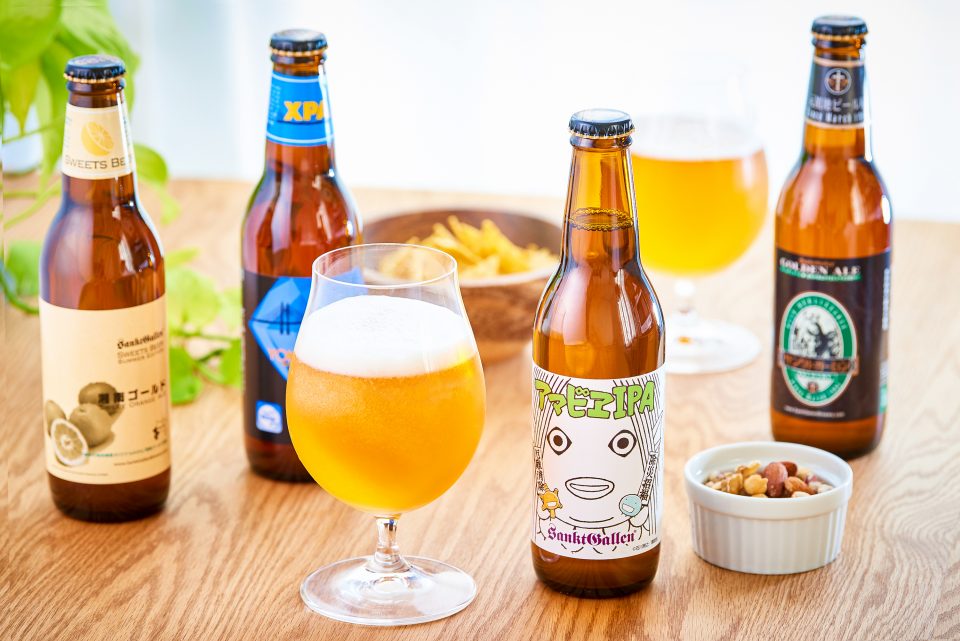

When you order a draft beer in a Japanese restaurant, your server will bring you a beer straight away. But in other countries, your server will probably ask you: “Do you want a lager or ale?” or “What brand do you want?”
“That single word ‘beer’ covers so many types of beverages. I would like many more people to understand the enjoyment of choosing a beer that suits their preferences, their mood that day, or the food they are eating.” This is the wish of Iwamoto Nobuhisa, owner of the SanktGallen Brewery in Atsugi, Kanagawa.
Iwamoto, who is passionate about ales, created Amabie IPA in April 2020 with the hope that the spread of COVID-19 will be stopped. We spoke with Iwamoto about the future of Japanese microbreweries and his exuberance for ale.
The SanktGallen Brewery is located in Atsugi, Kanagawa. Nobuhisa Iwamoto, the brewery’s owner who had been producing and selling small-batch beer in the United States before Japan lifted its ban on microbreweries, is considered a pioneer in the Japanese craft beer world.
Beer can be broadly divided into lagers and ales based on their different production methods. Nearly all beer distributed in Japan is lager, which is produced by slow fermentation at low temperatures and is characterized by a simple, refreshing taste.
The SanktGallen Brewery, however, makes ales, which are in many ways diametrically opposed to lagers. Because ales are rapidly fermented at high temperatures, the character of the esters (fruit-like aroma components) tends to be expressed more strongly, giving ales their distinctive flavor dominated by a fruity aroma.
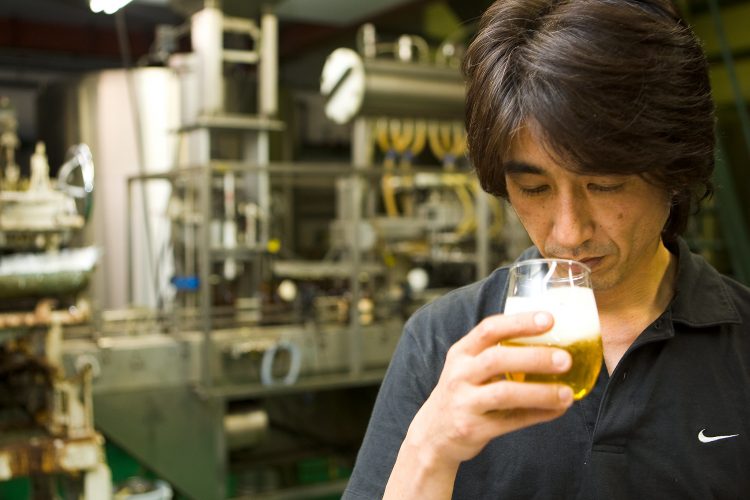
SanktGallen Brewery’s owner Iwamoto
“The mainstream crisp-tasting lagers in Japan do not interfere with the taste of food, making them easy to pair with any dish. In contrast, ales have strong characters with a fruity aroma and bitter hoppy flavor, which makes it fun to choose the right beer that matches your preferences and the food you are serving. What’s interesting to me is each beer has its own personality in the form of florid aromas and robust flavors. SanktGallen always has and always will stay true to ales.”
Iwamoto has poured his passion into brewing beer for many years, but it’s been a long, hard road to where he is today.
“After I graduated from university, I got involved in running dim-sum restaurants that my dad operated. About 30 years ago, we opened a dim-sum restaurant in the United States, and I joined my dad on a trip to San Francisco. It was on that trip that I first had an ale and I was dumbfounded that such a beer existed. I honestly thought to myself: ‘What have I been doing with my life, not knowing about something this delicious until now.’”
Iwamoto was so fascinated by the taste of ales that he decided to brew his own. Japan at the time, however, did not allow small-scale production of beer and had many regulatory hurdles in place. Undaunted, Iwamoto constructed a brewery in a renovated restaurant in San Francisco and began brewing beer in the United States.
His efforts were picked up by the U.S. media in magazines like Time and Newsweek. The U.S. reports spread like wildfire in the Japanese media too, prompting the Japanese government in 1994 to permit small-scale beer brewing, finally lifting the so-called microbrewery ban.
“Until the ban was lifted, we had been importing the beer we brewed in San Francisco to Japan as well as brewing non-alcoholic beer at our dim-sum restaurant in Roppongi. Due to the time it took to transport our beer from the United States, some of it would get damaged. I had always wanted to brew beer in Japan, so in 1997 I set up a brewery in Atsugi.”
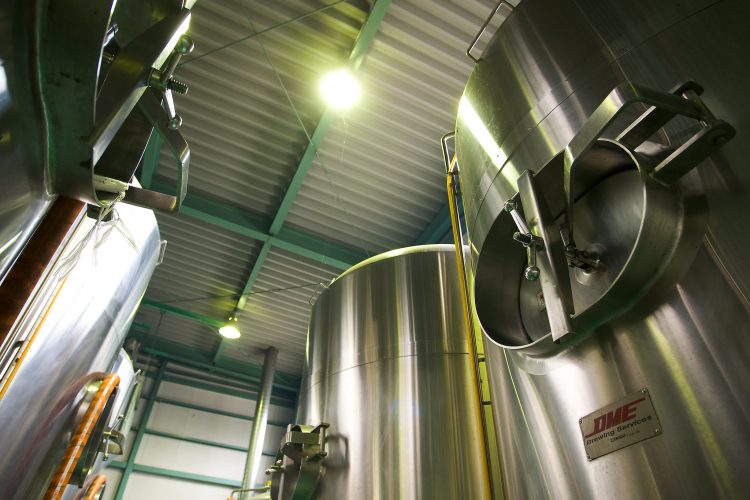
After setting up his brewery, it seemed like smooth sailing for Iwamoto, winning numerous domestic and international awards. But due to the fading microbrewery boom and other factors, the brewery found itself in a situation where it was unable to produce beer for a time.
Iwamoto, however, was determined and managed to find a way to make beer again. He set up a new company on his own and made a comeback as SanktGallen.
In 2020, SanktGallen started a new endeavor, producing Amabie IPA.
“As the COVID-19 pandemic spread around the world, breweries in other countries stepped up to help society in many different ways, such as producing disinfecting alcohol. Seeing these reports, I kept thinking ‘Is there anything we can do?’
“Just as I was racking my brains over this, one of our employees posted on social media a photo of an imaginary beer bottle with label depicting Amabie. Amabie is a folklore spirit said to have the power to quell plagues. Lots of people saw the post and chimed in saying they wished there really was such a beer.
“As chance would have it, SanktGallen had had to cancel all our beer-related events from Golden Week [a holiday period generally running from April 29 to May 5] through the whole summer, and the beer we’d brewed to be launched as a new product was just sitting in the tanks with no place to go. So we decided to release this beer as Amabie IPA with the prayer that the pandemic would be contained.”
The manga artist Ishikawa Masayuki — known for Moyasimon, which is familiar to fermentation fans, Madowanai Hoshi, and other works — created the illustration for the Amabie label. An old acquaintance of Iwamoto, Ishikawa soon agreed to illustrate the label after hearing the idea.
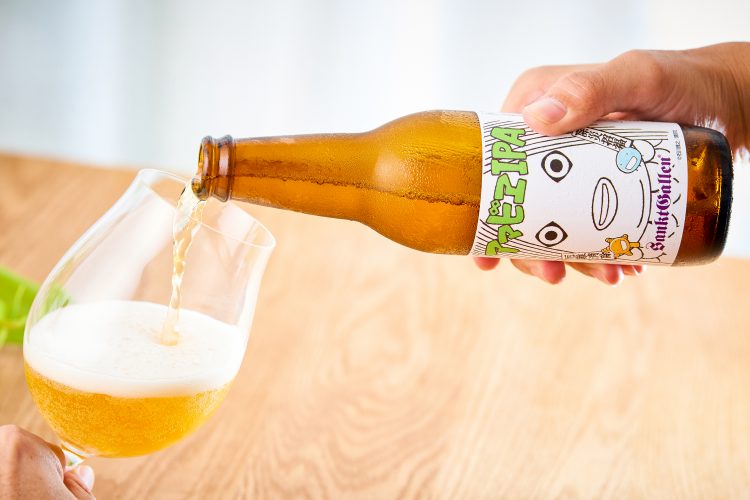
Amabie IPA is crafted using seven kinds of citrus hops. By adding oats to the wheat malt, the IPA’s body is smooth and creamy, punctuated by a good amount of bitterness and a dry aftertaste.
The initial run of 12,000 bottles sold out when the beer was released in April 2020. Iwamoto continues to make Amabie IPA, donating all profits to the COVID-19 Relief Fund. Donations reached approximately five million yen in just two months as of the end of June 2020.
“We hope this project will provide some assistance to the people on the frontlines in hospitals and elsewhere combating the virus. We pray the COVID-19 outbreak will be under control as soon as possible. This project will continue until we are able to hold beer events again as in the past.”
Brewing beer is a complex and delicate process. You can’t open a keg and check the aroma or flavor midway; you have no choice but to wait until the beer is finished.
“Even if you want a bit more sweetness, you can’t always draw it out, and you can’t force the fermentation process to stop. So there are definitely difficult parts to brewing beer. On the other hand, it’s not that hard to make beer of a certain degree of quality.
“To be honest though, there are only a handful of times where I brewed a beer that in hindsight truly and completely convinced me. I’m constantly thinking of how to brew tastier and better beer.”
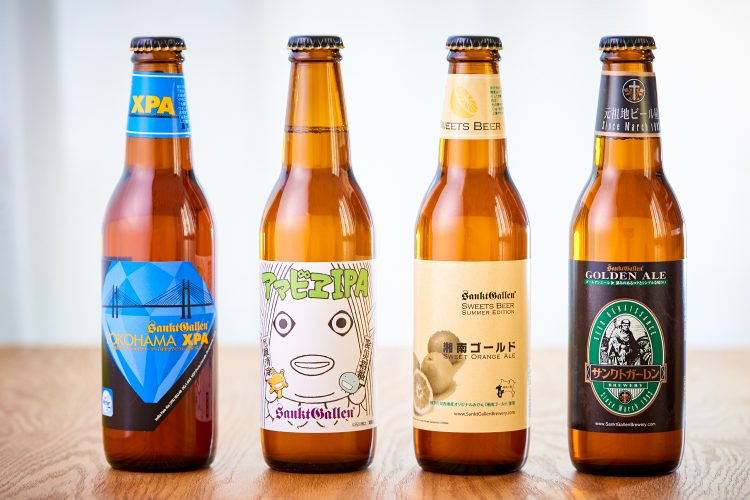
A lineup of SanktGallen Brewery’s most popular products: (from left) Yokohama XPA, Amabie IPA, Shonan Gold (a fruit beer sold only in the spring and summer), and Golden Ale
In addition to its standard ales, SanktGallen Brewery’s fruit beers and sweet beers are also popular.
“At the end of the day, beer is a drink to be enjoyed casually. I would like many more people to know about the variety of beers available, in terms of flavors and aromas.
“I think the ways to enjoy beer will continue to grow, with people finding their personal favorites or pairing certain beers with certain cuisines.”

owner of SanktGallen Brewery
owner of SanktGallen Brewery
Iwamoto runs SanktGallen Brewery, a microbrewery in Atsugi, Kanagawa, that produces many unique beers such as sweet beers and beers sold in one sho (1.8 liter) saké bottles. The craft beers he has produced have won numerous awards at international competitions including the International Beer Cup. SanktGallen products can be purchased through the brewery’s official website.